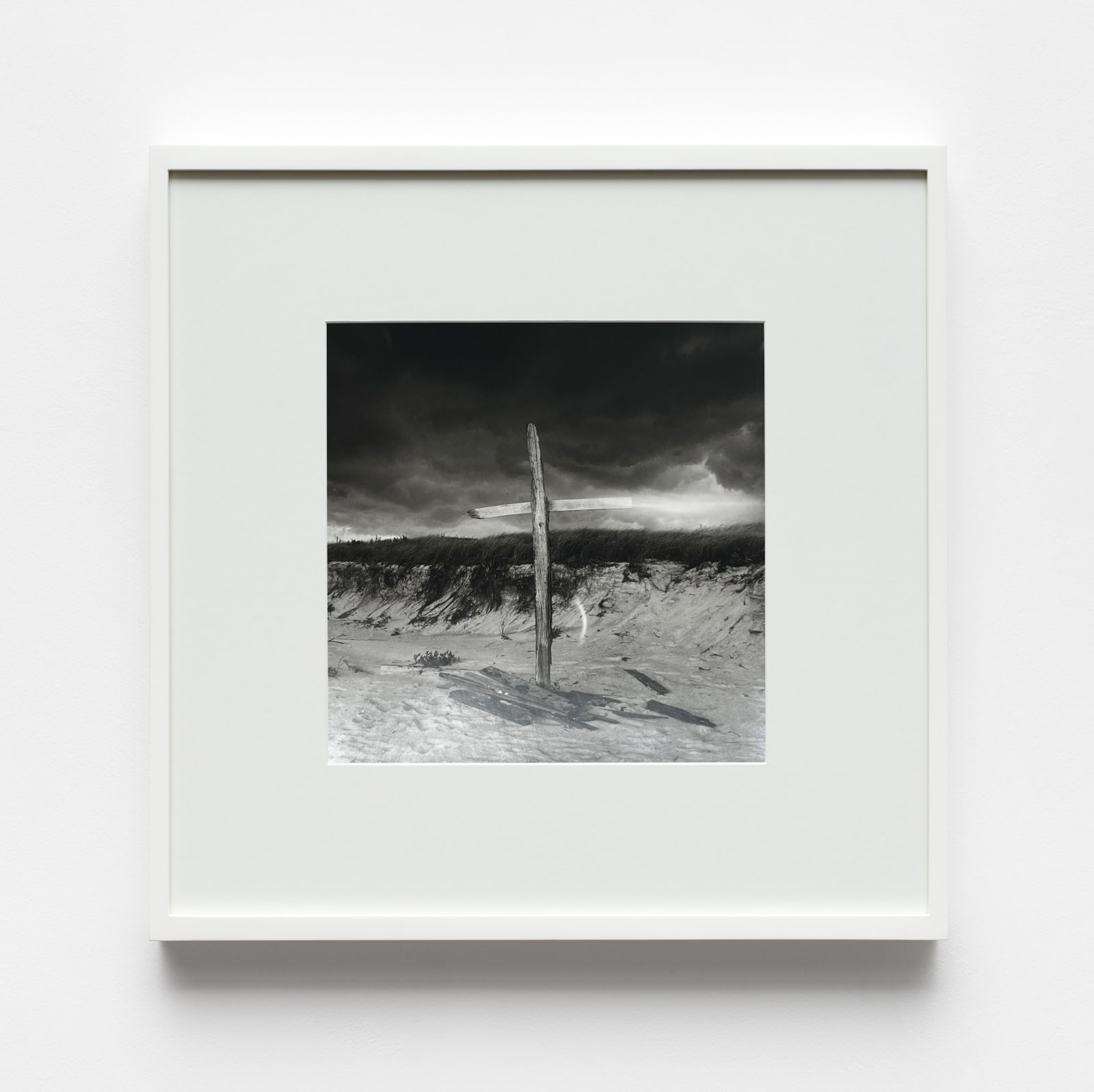Peter Hujar
Altar, Storm, Fire Island, circa 1971
vintage gelatin silver print
impressão da época em gelatina e prata
impressão da época em gelatina e prata
35.6 x 35.6 cm (imagem)
14 x 14 in (image)
50.8 x 40.6 cm (papel)
20 x 16 in (paper)
14 x 14 in (image)
50.8 x 40.6 cm (papel)
20 x 16 in (paper)
From Oscar Wilde’s visit to the island in 1882, to the steady development of Cherry Grove as “America's First Gay and Lesbian Town,” Fire Island has long been a home...
From Oscar Wilde’s visit to the island in 1882, to the steady development of Cherry Grove as “America's First Gay and Lesbian Town,” Fire Island has long been a home and haven to LGBTQ visitors and residents alike.
Owing its development to the island’s relative isolation, its proximity to New York City, and to the efforts of early renters and homeowners, Fire Island's LGBTQ community became a trailblazing force across America. Long before the Stonewall Riots set the movement for Gay Liberation into motion, Fire Island provided an important enclave to residents and visitors at a time when almost everything about living openly as a lesbian, gay, bisexual, transgender, or queer (LGBTQ) person was illegal in the United States. Fire Island towns such as Cherry Grove, and later Fire Island Pines, were among the few places where LGBTQ people could congregate and express themselves openly.
For many, Fire Island was something of a cultural laboratory. Free to be themselves, early LGBTQ residents and visitors experimented with theatre and art in ways that would actively shape and define LGBTQ culture for decades to come.
Hujar did many photographs in Fire Island and documented the bittersweet moment for the LGBTQ community in New York.
Owing its development to the island’s relative isolation, its proximity to New York City, and to the efforts of early renters and homeowners, Fire Island's LGBTQ community became a trailblazing force across America. Long before the Stonewall Riots set the movement for Gay Liberation into motion, Fire Island provided an important enclave to residents and visitors at a time when almost everything about living openly as a lesbian, gay, bisexual, transgender, or queer (LGBTQ) person was illegal in the United States. Fire Island towns such as Cherry Grove, and later Fire Island Pines, were among the few places where LGBTQ people could congregate and express themselves openly.
For many, Fire Island was something of a cultural laboratory. Free to be themselves, early LGBTQ residents and visitors experimented with theatre and art in ways that would actively shape and define LGBTQ culture for decades to come.
Hujar did many photographs in Fire Island and documented the bittersweet moment for the LGBTQ community in New York.



